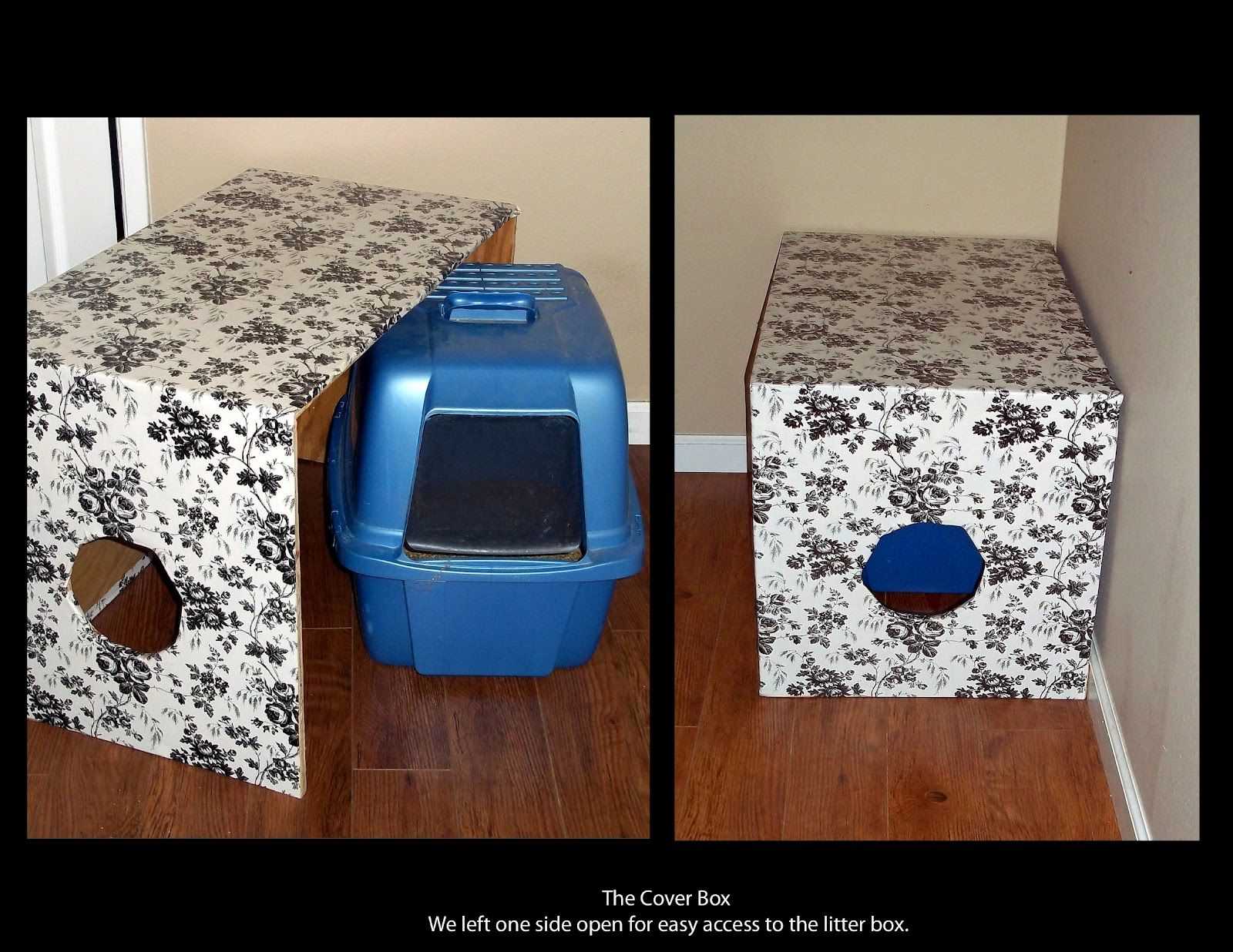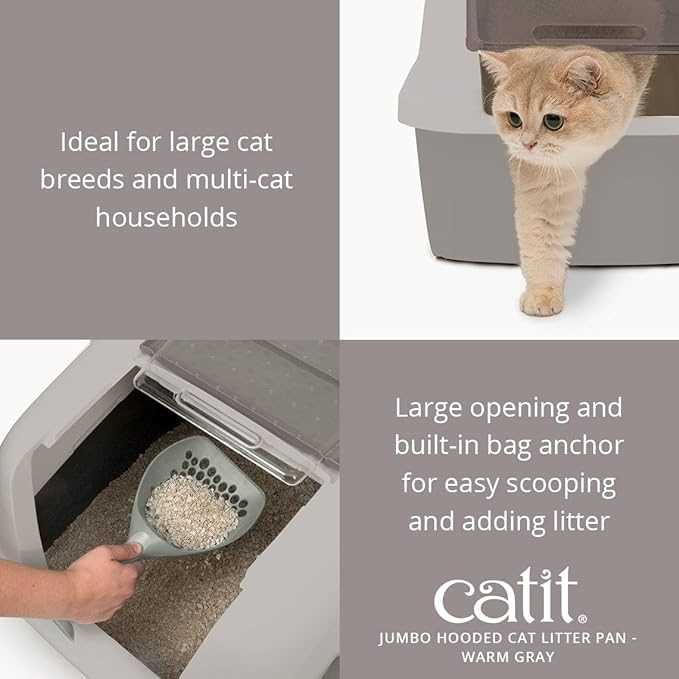Install a barrier or gate that restricts access to the designated area. Choose a design that allows easy entry for smaller pets while keeping larger companions at bay. Look for options that can be adjusted to fit various openings, ensuring it remains secure and functional.
Consider utilizing a covered receptacle. This design not only provides privacy for your furry friend but also makes it more challenging for canines to investigate. Select one with a lid that opens only from the top, making it less accessible for larger animals.
Utilize scents that deter unwanted visitors. Certain fragrances, such as citrus or vinegar, can be unpleasant for dogs. Spraying these scents around the perimeter can create a natural barrier, dissuading them from approaching.
Implement training techniques. Reward your canine for staying away from the area, using treats and praise to reinforce positive behavior. Consistency is key; make sure everyone in the household follows the same approach to achieve the best results.
Keep Pups Away from Kitty’s Toilet

Position your feline’s restroom in a space that’s less accessible to canines. Raised platforms or elevated areas make it harder for puppers to reach the contents. Consider utilizing a gate or barrier that allows my kind to pass through but restricts larger, more curious companions.
Invest in covered containers. These designs provide privacy for us cats while complicating access for our canine friends. Look for models with side entrances that are easily navigable for felines but challenging for larger pets.
Utilize deterrents such as citrus scents or specific sprays that can repel dogs. Be cautious, though, as some substances may not be safe for cats. Always check if products, like menthol, are safe for us by visiting resources like is menthol safe for cats.
Regularly clean the area and remove any remnants promptly. A fresh environment may discourage dogs from showing interest. Additionally, creating a positive association with the cat’s designated area for yourself helps establish boundaries.
Finally, ensure your canine has plenty of engaging toys and activities to distract them from my personal space. A well-stimulated pup is less likely to venture into areas meant for me!
Choosing the Right Location for the Litter Box
Place it in a quiet, low-traffic area where I can have privacy. Avoid spots near my food and water bowls to minimize any discomfort or confusion. A corner of a room can be ideal, as it offers some seclusion while still being accessible for me.
Ensure the area is well-ventilated to help with odor control. If possible, keep it away from loud appliances or high-activity zones, as noise can be distracting. A good rule of thumb is to choose a spot that’s easy for me to access but challenging for others, like my canine sibling, to reach.
Height Considerations
Consider elevating the container slightly. This can deter curious noses from exploring. Using a box with higher sides can also help prevent messes while ensuring I can still hop in and out comfortably.
Accessibility and Maintenance
Regularly check the location for cleanliness. A dirty area will discourage me from using it. If necessary, relocate it to a more convenient spot if I seem hesitant to go. Maintaining a tidy environment ensures I feel comfortable and secure. For optimal health, pair my diet with options like best dry foods for cats.
Training Your Dog to Avoid the Litter Box

Establish clear boundaries. Use a specific command, like “leave it,” whenever your furry friend approaches my space. Consistency is key; repeat this phrase firmly yet calmly each time.
Reward Positive Behavior
When your canine companion walks away from my area, offer treats or praise. Positive reinforcement strengthens the association between avoiding my territory and receiving rewards, making them more likely to repeat that behavior.
Create a Distraction
Engage your pooch with toys or games nearby. This diverts their focus from my essentials, encouraging them to find fun elsewhere rather than exploring my personal space.
Video:
Install a barrier or gate that restricts access to the designated area. Choose a design that allows easy entry for smaller pets while keeping larger companions at bay. Look for options that can be adjusted to fit various openings, ensuring it remains secure and functional.
Consider utilizing a covered receptacle. This design not only provides privacy for your furry friend but also makes it more challenging for canines to investigate. Select one with a lid that opens only from the top, making it less accessible for larger animals.
Utilize scents that deter unwanted visitors. Certain fragrances, such as citrus or vinegar, can be unpleasant for dogs. Spraying these scents around the perimeter can create a natural barrier, dissuading them from approaching.
Implement training techniques. Reward your canine for staying away from the area, using treats and praise to reinforce positive behavior. Consistency is key; make sure everyone in the household follows the same approach to achieve the best results.
Keep Pups Away from Kitty’s Toilet

Position your feline’s restroom in a space that’s less accessible to canines. Raised platforms or elevated areas make it harder for puppers to reach the contents. Consider utilizing a gate or barrier that allows my kind to pass through but restricts larger, more curious companions.
Invest in covered containers. These designs provide privacy for us cats while complicating access for our canine friends. Look for models with side entrances that are easily navigable for felines but challenging for larger pets.
Utilize deterrents such as citrus scents or specific sprays that can repel dogs. Be cautious, though, as some substances may not be safe for cats. Always check if products, like menthol, are safe for us by visiting resources like is menthol safe for cats.
Regularly clean the area and remove any remnants promptly. A fresh environment may discourage dogs from showing interest. Additionally, creating a positive association with the cat’s designated area for yourself helps establish boundaries.
Finally, ensure your canine has plenty of engaging toys and activities to distract them from my personal space. A well-stimulated pup is less likely to venture into areas meant for me!
Choosing the Right Location for the Litter Box
Place it in a quiet, low-traffic area where I can have privacy. Avoid spots near my food and water bowls to minimize any discomfort or confusion. A corner of a room can be ideal, as it offers some seclusion while still being accessible for me.
Ensure the area is well-ventilated to help with odor control. If possible, keep it away from loud appliances or high-activity zones, as noise can be distracting. A good rule of thumb is to choose a spot that’s easy for me to access but challenging for others, like my canine sibling, to reach.
Height Considerations
Consider elevating the container slightly. This can deter curious noses from exploring. Using a box with higher sides can also help prevent messes while ensuring I can still hop in and out comfortably.
Accessibility and Maintenance
Regularly check the location for cleanliness. A dirty area will discourage me from using it. If necessary, relocate it to a more convenient spot if I seem hesitant to go. Maintaining a tidy environment ensures I feel comfortable and secure. For optimal health, pair my diet with options like best dry foods for cats.
Training Your Dog to Avoid the Litter Box

Establish clear boundaries. Use a specific command, like “leave it,” whenever your furry friend approaches my space. Consistency is key; repeat this phrase firmly yet calmly each time.
Reward Positive Behavior
When your canine companion walks away from my area, offer treats or praise. Positive reinforcement strengthens the association between avoiding my territory and receiving rewards, making them more likely to repeat that behavior.
Create a Distraction
Engage your pooch with toys or games nearby. This diverts their focus from my essentials, encouraging them to find fun elsewhere rather than exploring my personal space.
Video:
Install a barrier or gate that restricts access to the designated area. Choose a design that allows easy entry for smaller pets while keeping larger companions at bay. Look for options that can be adjusted to fit various openings, ensuring it remains secure and functional.
Consider utilizing a covered receptacle. This design not only provides privacy for your furry friend but also makes it more challenging for canines to investigate. Select one with a lid that opens only from the top, making it less accessible for larger animals.
Utilize scents that deter unwanted visitors. Certain fragrances, such as citrus or vinegar, can be unpleasant for dogs. Spraying these scents around the perimeter can create a natural barrier, dissuading them from approaching.
Implement training techniques. Reward your canine for staying away from the area, using treats and praise to reinforce positive behavior. Consistency is key; make sure everyone in the household follows the same approach to achieve the best results.
Keep Pups Away from Kitty’s Toilet

Position your feline’s restroom in a space that’s less accessible to canines. Raised platforms or elevated areas make it harder for puppers to reach the contents. Consider utilizing a gate or barrier that allows my kind to pass through but restricts larger, more curious companions.
Invest in covered containers. These designs provide privacy for us cats while complicating access for our canine friends. Look for models with side entrances that are easily navigable for felines but challenging for larger pets.
Utilize deterrents such as citrus scents or specific sprays that can repel dogs. Be cautious, though, as some substances may not be safe for cats. Always check if products, like menthol, are safe for us by visiting resources like is menthol safe for cats.
Regularly clean the area and remove any remnants promptly. A fresh environment may discourage dogs from showing interest. Additionally, creating a positive association with the cat’s designated area for yourself helps establish boundaries.
Finally, ensure your canine has plenty of engaging toys and activities to distract them from my personal space. A well-stimulated pup is less likely to venture into areas meant for me!
Choosing the Right Location for the Litter Box
Place it in a quiet, low-traffic area where I can have privacy. Avoid spots near my food and water bowls to minimize any discomfort or confusion. A corner of a room can be ideal, as it offers some seclusion while still being accessible for me.
Ensure the area is well-ventilated to help with odor control. If possible, keep it away from loud appliances or high-activity zones, as noise can be distracting. A good rule of thumb is to choose a spot that’s easy for me to access but challenging for others, like my canine sibling, to reach.
Height Considerations
Consider elevating the container slightly. This can deter curious noses from exploring. Using a box with higher sides can also help prevent messes while ensuring I can still hop in and out comfortably.
Accessibility and Maintenance
Regularly check the location for cleanliness. A dirty area will discourage me from using it. If necessary, relocate it to a more convenient spot if I seem hesitant to go. Maintaining a tidy environment ensures I feel comfortable and secure. For optimal health, pair my diet with options like best dry foods for cats.
Training Your Dog to Avoid the Litter Box

Establish clear boundaries. Use a specific command, like “leave it,” whenever your furry friend approaches my space. Consistency is key; repeat this phrase firmly yet calmly each time.
Reward Positive Behavior
When your canine companion walks away from my area, offer treats or praise. Positive reinforcement strengthens the association between avoiding my territory and receiving rewards, making them more likely to repeat that behavior.
Create a Distraction
Engage your pooch with toys or games nearby. This diverts their focus from my essentials, encouraging them to find fun elsewhere rather than exploring my personal space.







